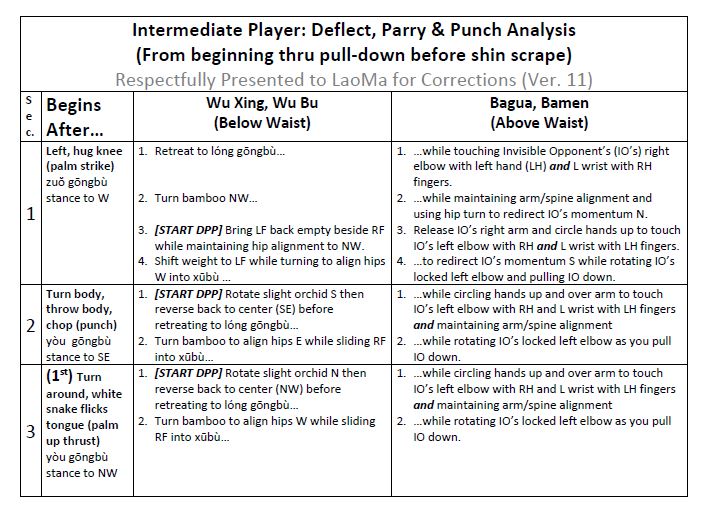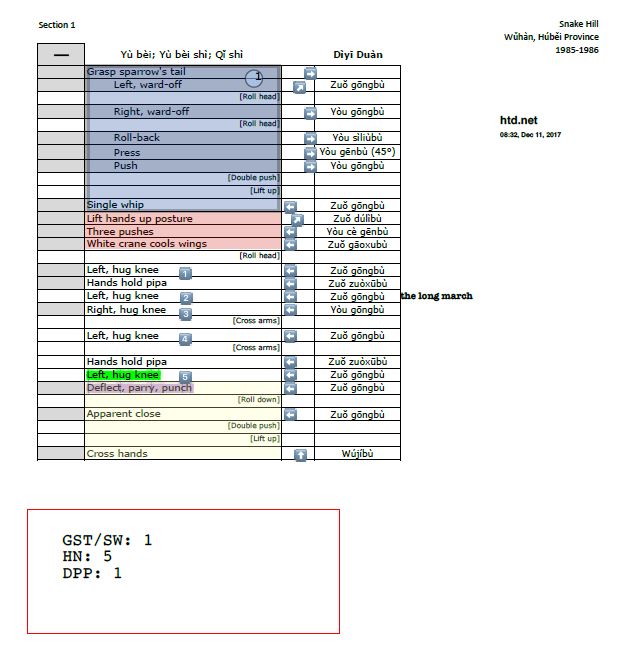Working with the form in this way can give a practitioner a clearer picture of the structure of the form. Think of the form as a building. Perhaps the most often repeated sequence can be seen as the support posts for the entire structure - something the artist returns to over and over as the base of their form - Grasp Sparrow's Tail/Single whip for example.. From there, the form contains other frequently repeated postures like Deflect, Parry and Punch or Hug Knee. These can be seen as the joists or beams that tie the substantial posts together, helping to create a cohesive structure. As other postures are added in, the structure of form begins to take full form, a structure complete with all the trimmings (think complicated postures that appear once in the form).
As our classes have worked with this concept, one of our students has created a helpful guide to the Deflect, Parry and Punch posture, which is repeated a total of six times. It's important to know how the repetitions are similar and in what ways they differ.





